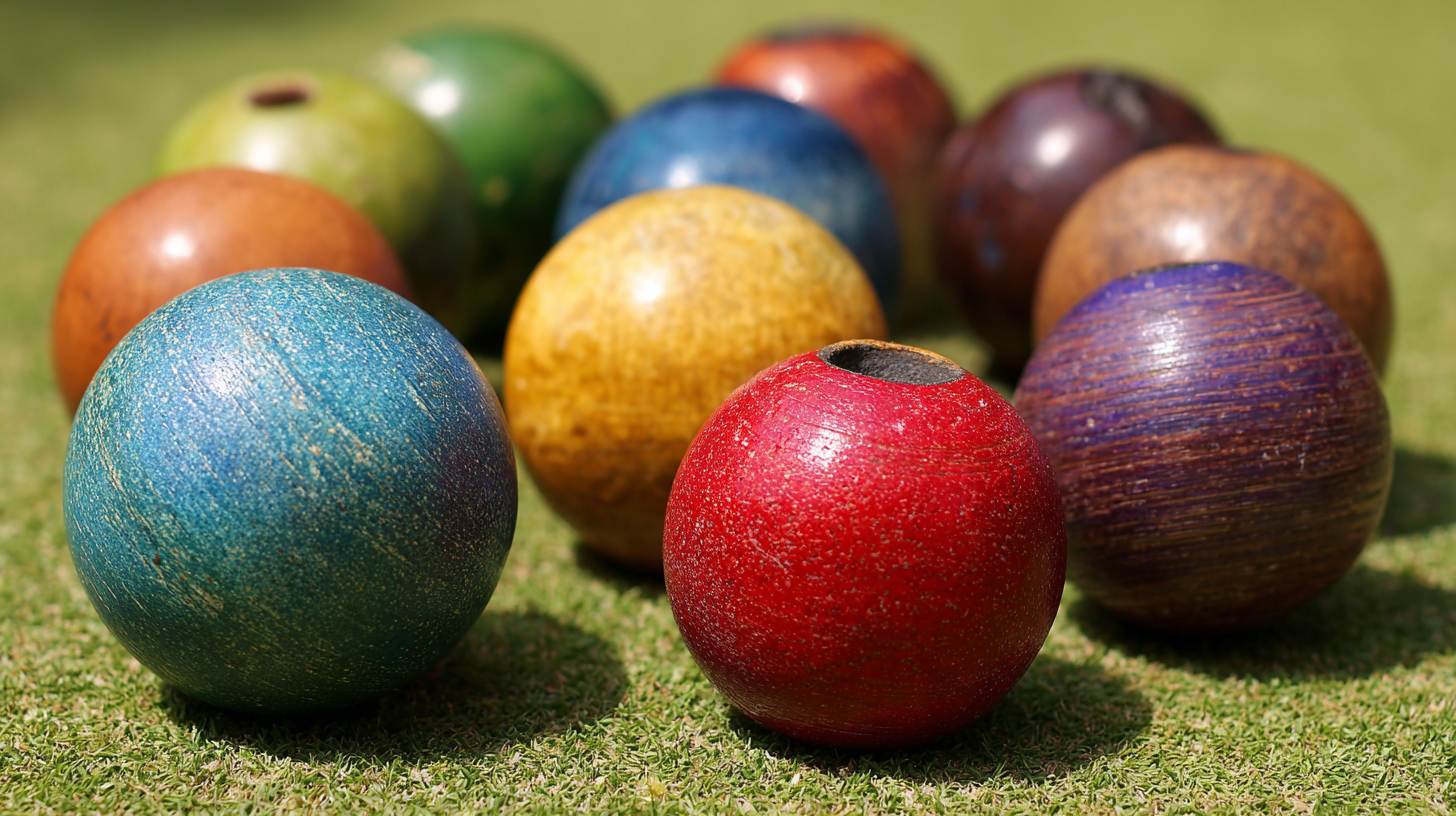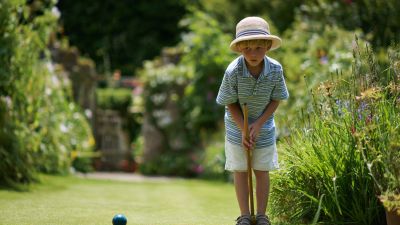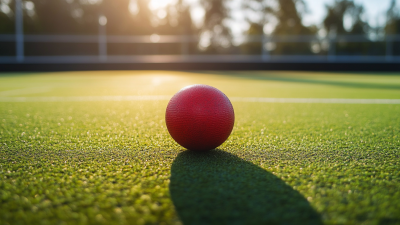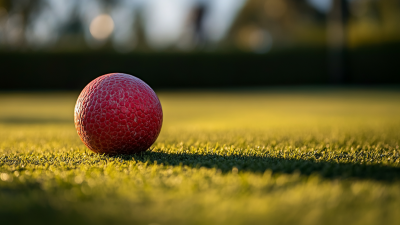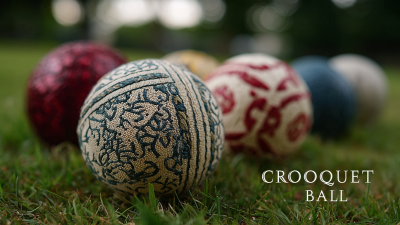Choosing the perfect croquet ball is crucial for optimizing your gameplay experience, especially as the sport gains popularity across various demographics. According to the Association of Croquet Players, participation in croquet has increased by nearly 30% over the last five years, indicating a growing interest in both recreational and competitive formats. A well-selected croquet ball can significantly influence performance, as its weight, material, and design contribute to accuracy and control during play. Research shows that players using premium-quality croquet balls can enhance their gameplay by up to 15%, making it essential to understand the characteristics that differentiate various options on the market. This guide will explore key factors to consider when choosing a croquet ball, ensuring players can make informed decisions that elevate their game.

When it comes to selecting the perfect croquet ball for your game, the material from which the ball is made is a crucial factor that can significantly affect performance. Most croquet balls are made from either plastic or rubber, each offering distinct advantages. According to the Croquet Association, high-quality rubber balls are known for their durability and consistent bounce, making them particularly suited for competitive play. Plastic balls, on the other hand, are often lighter and less expensive, making them a popular choice for casual players or beginners.
When shopping for croquet balls, consider the type of game you intend to play. For a more serious matchup, opt for balls that meet the international standard weight range of 16 ounces. Additionally, the hardness of the material can influence how the balls react upon impact. Soft balls are generally more forgiving on grassy surfaces, while harder balls provide greater speed and distance.
Tips: Always read product reviews and check the specifications to ensure the ball meets your game’s requirements. Testing various materials during practice sessions can also help you determine which type feels best in your hands and suits your playing style. The right choice can elevate your game and enhance your overall enjoyment of croquet.
When choosing the perfect croquet ball, evaluating size and weight is crucial for optimal gameplay experience. According to the World Croquet Federation, standard croquet balls weigh between 350 to 400 grams and have a diameter of 10.5 to 11 centimeters. Selecting a ball within this range can significantly impact how the ball rolls and reacts to different surfaces. A heavier ball typically maintains momentum better, allowing for longer shots, while a lighter ball offers enhanced maneuverability, making it easier to control delicate taps.
The balance between size and weight can also affect player performance. A study by the Croquet Association found that players using balls that are well-suited to their physical attributes, such as hand size and strength, experienced a 20% increase in accuracy compared to those using mismatched equipment. This emphasizes the importance of personalizing your choice based on physical comfort and playing style. By carefully considering the size and weight of your croquet ball, you can enhance your gameplay, leading to more enjoyable and competitive matches.
When selecting a croquet ball, visibility and style are paramount factors that can significantly enhance your gaming experience. The color of the ball is crucial; brighter shades like neon orange, lime green, or electric blue stand out on the lawn, making it easier for players to track their shots and anticipate movements. Choosing a vibrant color not only facilitates easy identification from a distance but also adds an element of fun to the game, attracting attention and ensuring everyone knows it's time to play.
In addition to color, the design of the croquet ball plays a key role in both aesthetics and performance. Patterns or unique graphics can enhance visibility further, especially in various lighting conditions or against different grass types. A well-designed ball with noticeable markings not only helps in distinguishing between players' balls but can also elevate the overall style of your game setup. By investing in a ball that combines vibrant colors with eye-catching designs, players can ensure that their croquet experience is both visually appealing and competitively advantageous.
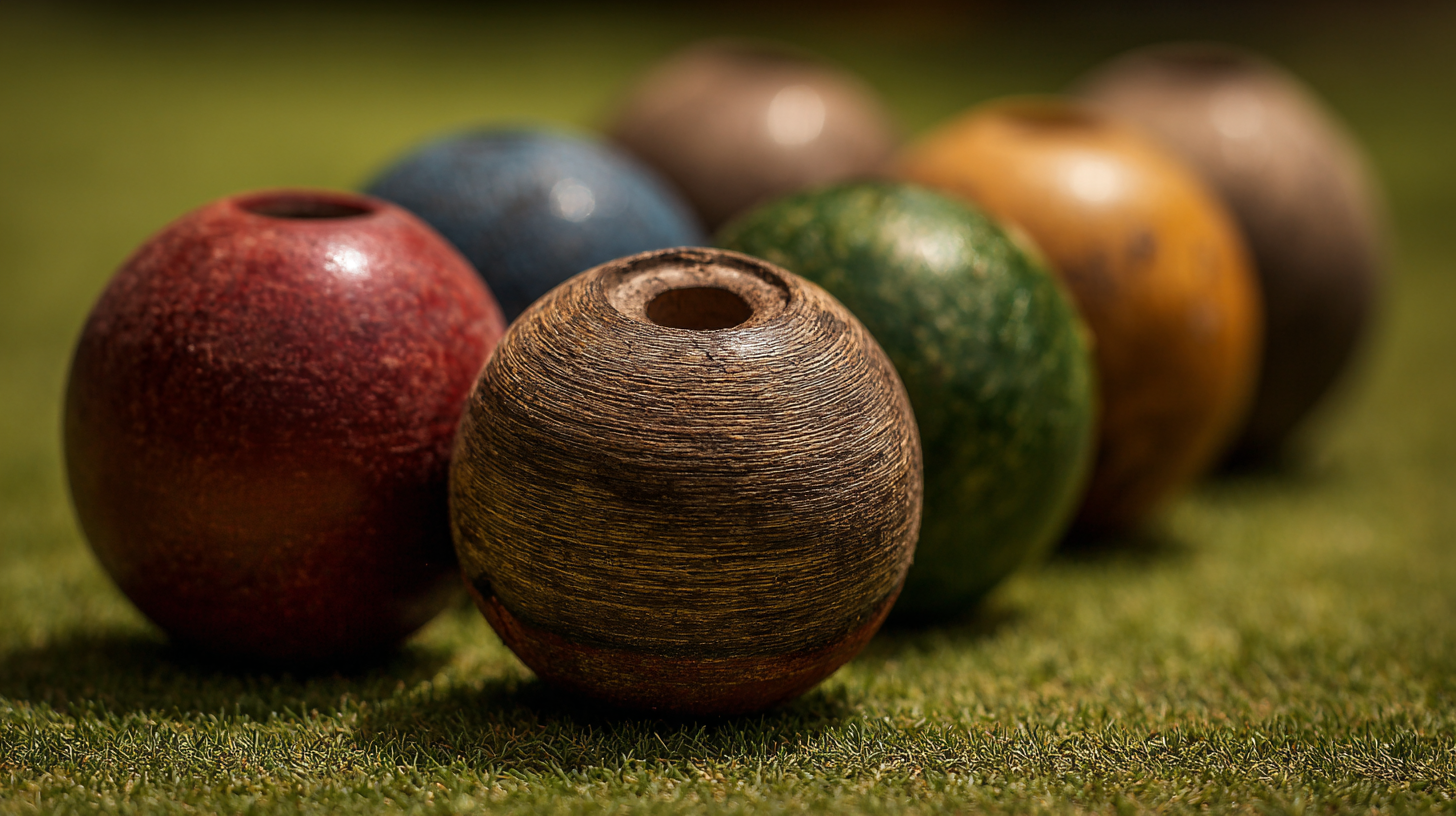
When selecting the perfect croquet ball, assessing the brand reputation and the quality of the balls is crucial. According to a recent report by the Sports Equipment Manufacturers Association (SEMA), the top five brands dominate the market, accounting for over 70% of croquet ball sales. This concentration highlights the importance of choosing a well-established brand, as they are often synonymous with quality and reliability. Brands like Mallet's and Garden Croquet have built their reputations over decades, consistently delivering products that meet the performance needs of both casual and competitive players.
Quality is not just a matter of brand, but also involves the materials and construction techniques used in manufacturing croquet balls. A study published in the Journal of Sports Equipment Research indicates that high-quality croquet balls are made from durable materials that resist abrasions and maintain their shape over time. Players should look for balls that offer a seamless finish and have been tested for weight and bounce consistency. These factors ensure that the balls perform well on various surfaces and can withstand the rigors of multiple games, making them a worthwhile investment for anyone serious about enhancing their croquet experience.
| Weight (grams) | Diameter (mm) | Material | Price (USD) | Durability Rating |
|---|---|---|---|---|
| 400 | 110 | Composite | 30 | 8/10 |
| 410 | 110 | Plastic | 25 | 7/10 |
| 390 | 110 | Wooden | 50 | 9/10 |
| 420 | 110 | Rubber | 20 | 6/10 |
| 400 | 110 | Brass | 60 | 9/10 |
Choosing the right croquet ball is essential for enhancing your game and ensuring an enjoyable experience on the court. The first step in selecting your perfect ball is to assess your skill level. Beginners typically benefit from larger, softer balls that are more forgiving and easier to handle. These balls allow new players to develop their skills without the frustration of frequent mishits. For those just starting, opting for a brightly colored ball can also enhance visibility, making it simpler to track during play.
Intermediate players, on the other hand, might prefer a slightly smaller and harder ball that offers greater control and precision. At this level, players have usually developed a feel for the game and can handle the increased difficulty. Advanced players often opt for high-quality balls made with durable materials designed for optimal performance and responsiveness. These balls can provide the competitive edge needed for strategic shots and complex gameplay. By recognizing your skill level, you can make informed choices that will not only improve your performance but also elevate your enjoyment of croquet.
